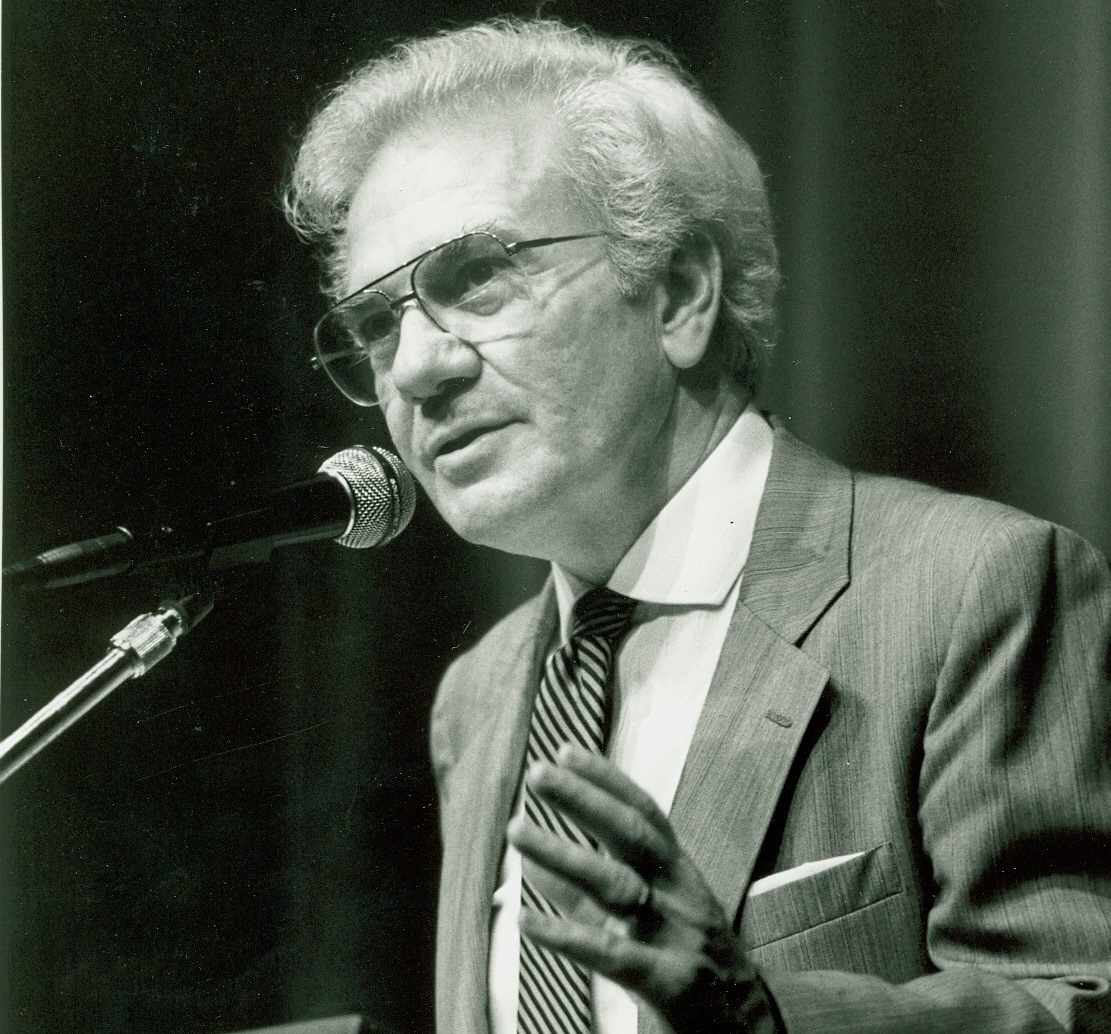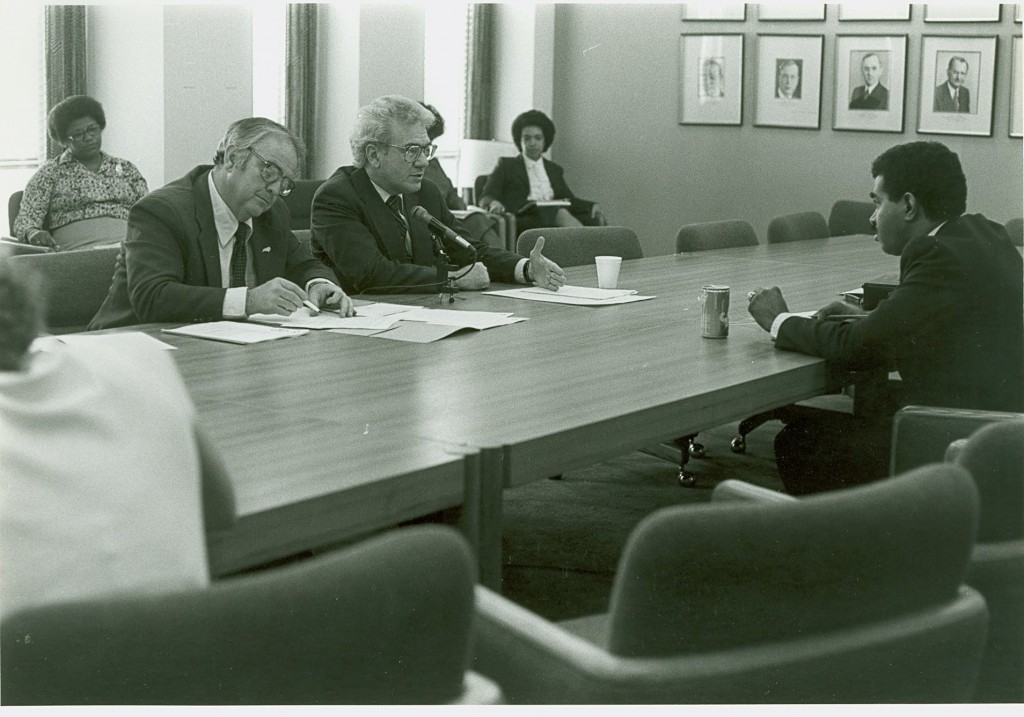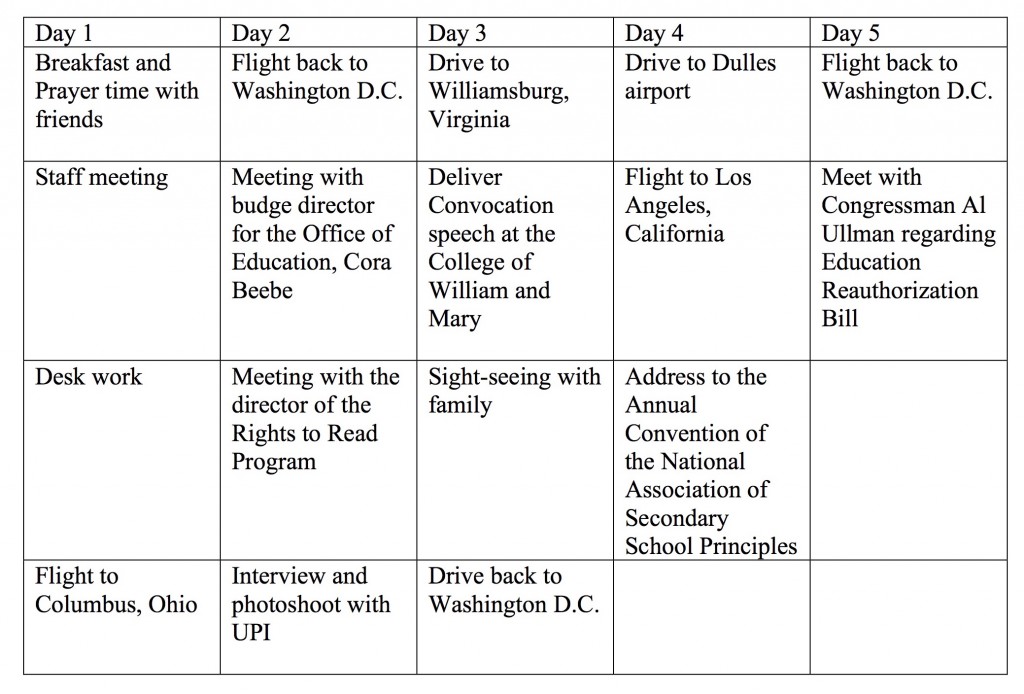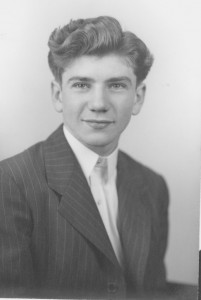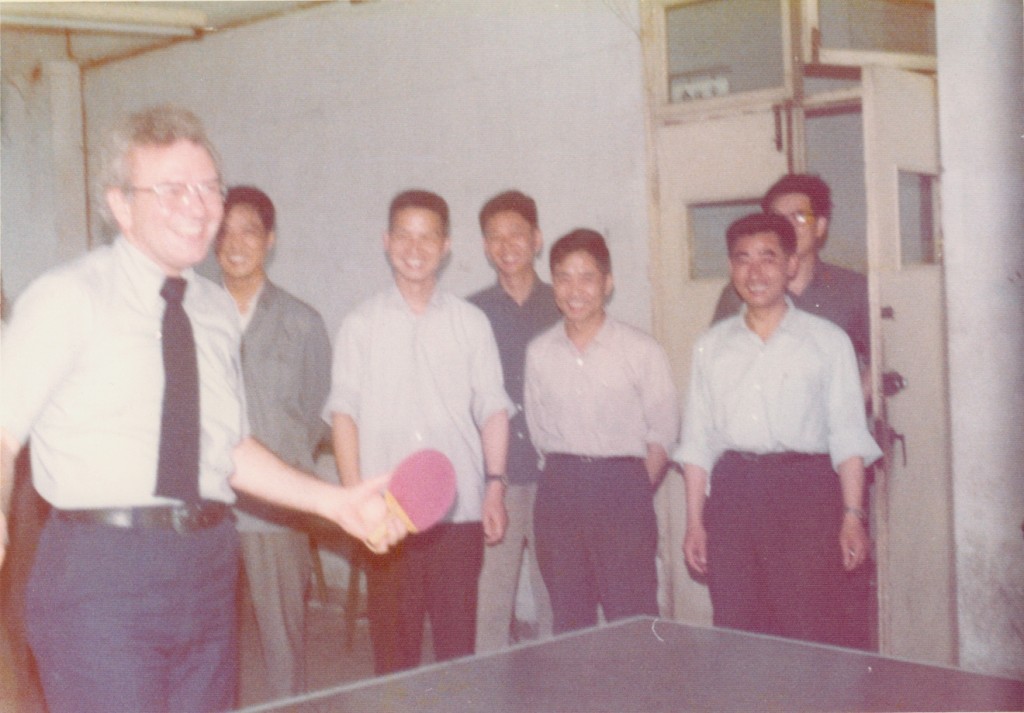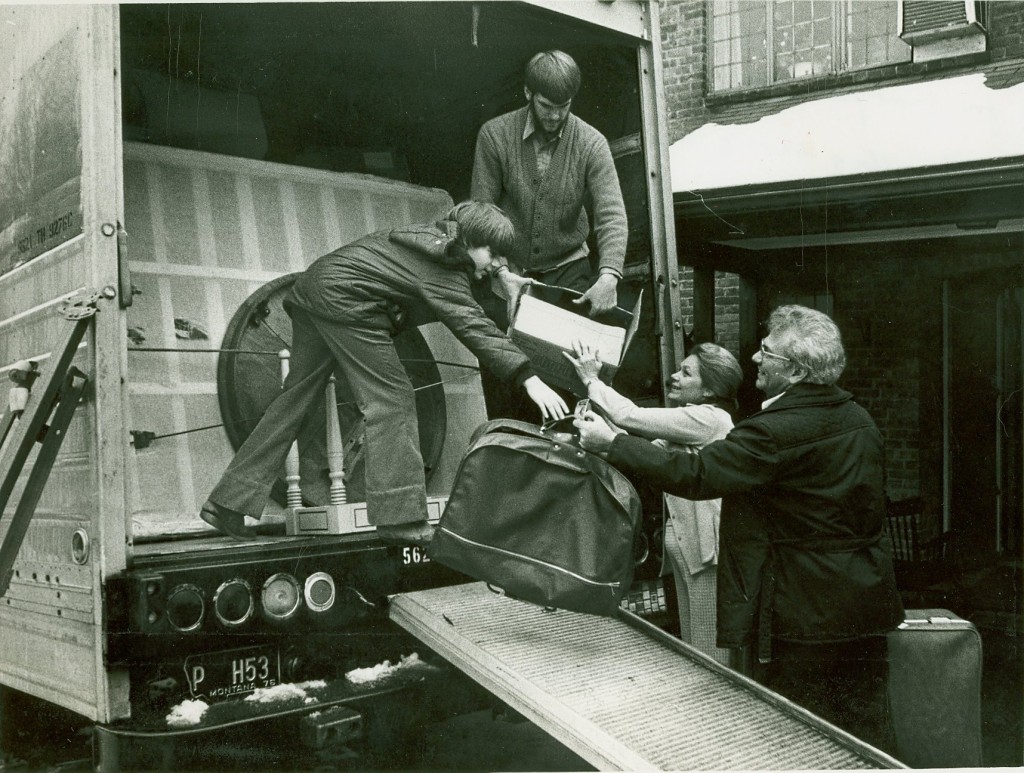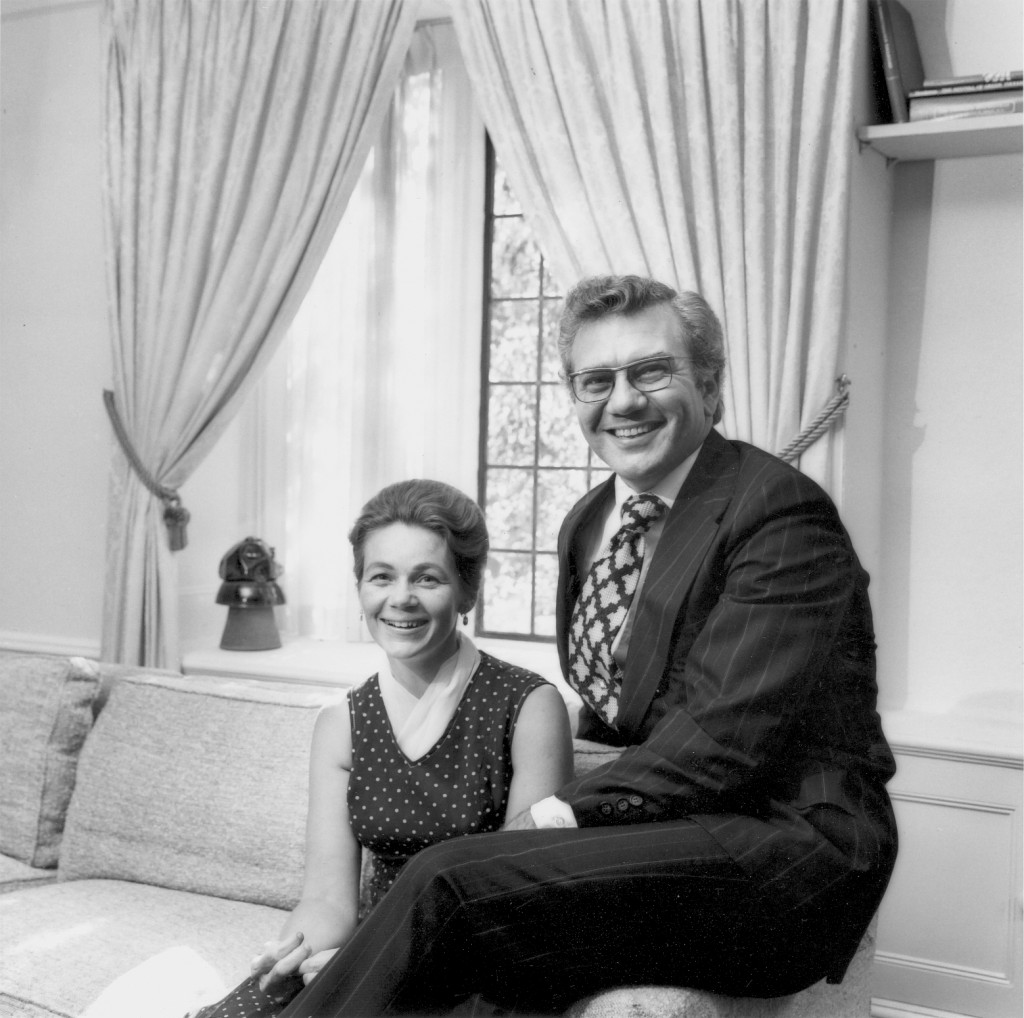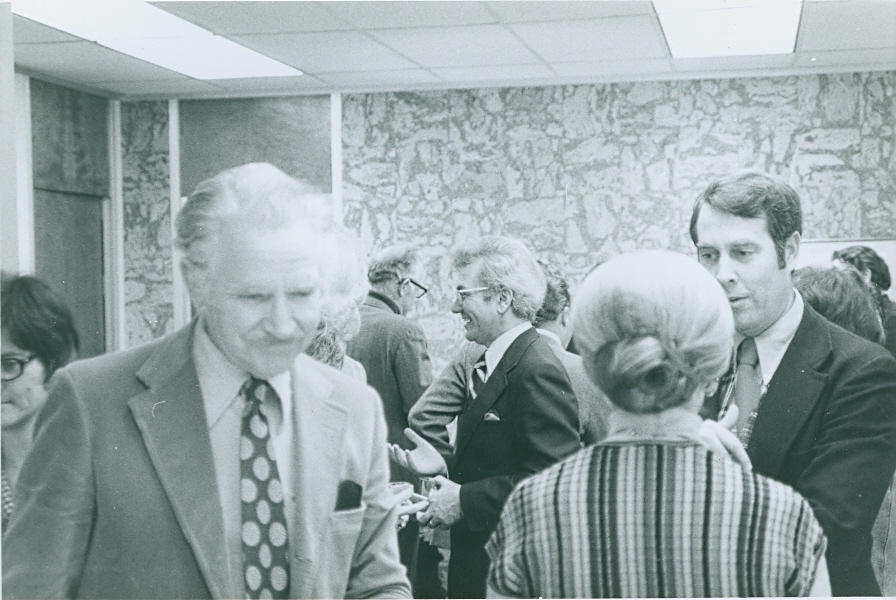
Ernest L. Boyer mingling with employees of the central administration of SUNY in Albany, New York. -BCA
Today’s Photo Friday post features Ernie Boyer mingling with employees of the State University of New York (SUNY) Administration. On the surface, it may seem that this event is of little importance. However, what is occurring in today’s featured picture is something that is important to any profession: networking. By talking with various people at social events Boyer was able to accomplish many tasks simultaneously. He was able to build connections with people and stay informed about current issues in education. He also was able to establish an avenue to both receive and give help to his colleagues. Perhaps more importantly, through these types of events Boyer could achieve another goal, a goal that he had in common with many of the people attending social events like cocktail parties.
In her book Many Mansions, Boyer’s wife Kay describes this goal and the way it was accomplished by Boyer as almost an art form. She says:
These parties were an interesting study for me, and I was intrigued by watching people as they arrived and following their movements after they took a quick glance around the crowed room. They would politely greet people while moving swiftly to the one or two individuals they had sought out upon entering the room; often they had come to the party specifically to lobby for a particular cause. Under the pressure of busy daytime schedules, these events were often the only way to take care of some pressing issues
While Boyer shared this goal of taking care of certain issues with other professionals, he had his own unique methods, particularly in the fact that he was not always alone on these social ventures. Kay “loved to go and went whenever [her] duties allowed.” She was an important part in Boyer’s method of mingling. She could “help with the spying” or “alert Ernie if one of the people he was hoping to speak to was making moves toward the exit.”
In addition, Boyer was different than most professionals in that there were things that he valued more than accomplishing these goals of establishing connections or addressing a certain issues. For example, one of the reasons why Kay loved to go with Ernie to cocktail parties and vice versa was because it was a chance for them to “enjoy some time together.” They even referred to it as their own version of “date night.” Moreover, for Boyer the idea of mingling with people was about understanding others and who they were. He wanted to discover ways that he could help them, and he wanted to establish personal friendships. This is why the Boyers frequently hosted dinner parties for students, faculty, and administrators, and always made it a point to shake everyone’s hand and remember their names.
Therefore, today’s post represents how both Ernie and Kay Boyer never separated their hospitality, kindness, and friendship with their work. Many professionals today would do well to adapt the Ernie Boyer method of mingling.
